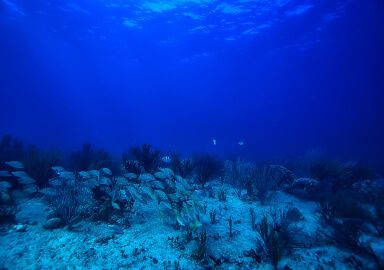Spotted Seatrout
The spotted seatrout is a trout-shaped fish common in nearshore and estuarine environments of the Southeastern USA.
View 23 listings
23
listings
–
price starting from
2
countries
–
to the nearest trip
Where and When?
Spotted seatrout are found around much of the south eastern seaboard of USA from New York, in the north, round to and throughout the Gulf of Mexico. They can be particularly common in suitable areas and are important food sources in many parts of their range. The preferred habitat of spotted seatrout is shallow water areas such as estuaries and lagoons, particularly in and around seagrass beds, especially around the Gulf Coast in Texas, Mississippi and Louisiana, as well as much of Florida, while they generally become less common northwards up the eastern seaboard. They can be caught throughout the year but the best time for seatrout fishing is spring and autumn. Most spotted seatrout are caught during daylight hours but early morning and evening can produce the best results. Some anglers say that, for spotted seatrout, the clearer the water the better the chances.
About Spotted Seatrout
The spotted seatrout, or spotted weakfish (Cynoscion nebulosus) has an elongate, trout-shaped body with silvery sides and a darker back that is stippled with many dark spots. It has two large dorsal fins, the forward one having strong, sharp spines while the caudal fin is substantial and strong. The large mouth is situated right at the front of the head and the lower jaw protrudes slightly beyond the upper. The top jaw has two large canines while the lower jaw has a row of strong, sharp but similar size teeth. The species can be common in suitable coastal areas where it feeds on invertebrates and fish but its favourite food appears to be shrimps. The largest spotted seatrout measured was about 1 meter long (3 ft. 4 in.) and weighed 7.9 kilograms (17lbs. 7 oz.) with an estimated age of about 18 years. Most fish caught, however, are considerably smaller and a fish of about 5 kilograms (11 lbs.) is generally regarded as a good sized seatrout. They are often associated with shallow, grassy areas of estuaries, where they spawn, but undergo no large-scale migrations.
How to Catch?
As a mostly inshore species usually found in shallow water close to the bank or shore, the best fishing is often from the land. Small boats can, however, assist in getting the angler near the fish concentrations in large lagoons, rivers or estuaries, and are essential for pursuing this species offshore. Many methods can be used and medium to light tackle is usually preferred. The natural food of spotted seatrout is invertebrates and fish but shrimps seem to be the preferred food at all stages while fish, as prey, increases in importance as the fish grows in size. The most successful fishing method depends on several factors but the use of live shrimps, if possible, is usually best. If not possible, however, dead shrimps or other naturally occurring bait, flies, artificial lures or anything made to resemble shrimps seems to produce results. The colour pink works well, probably due to it being the basic shrimp colour, and artificial lures or flies of this colour seem to work well. The species is a strong fighter and can give excellent sport and, generally, they are often keen to take a bait or lure.















